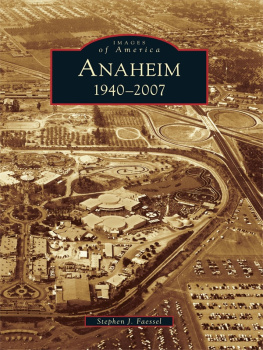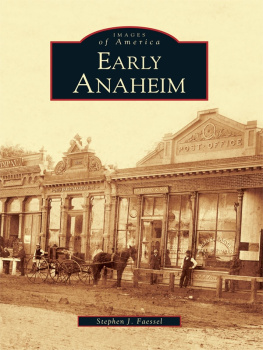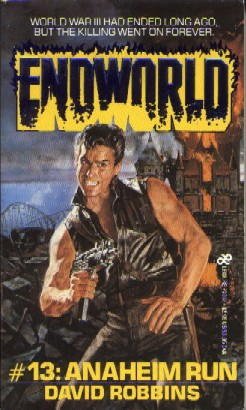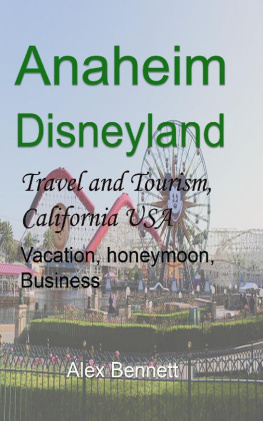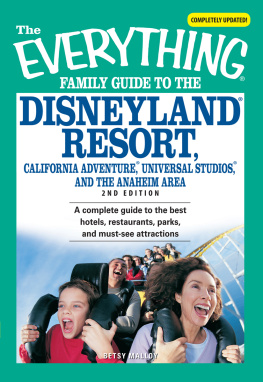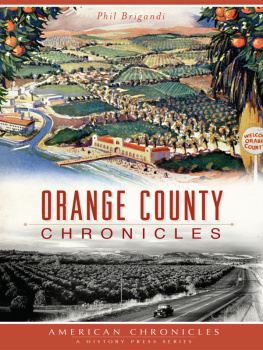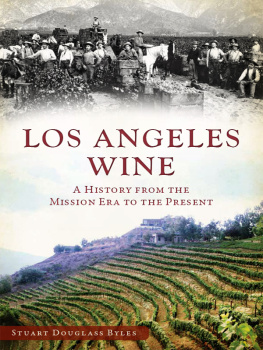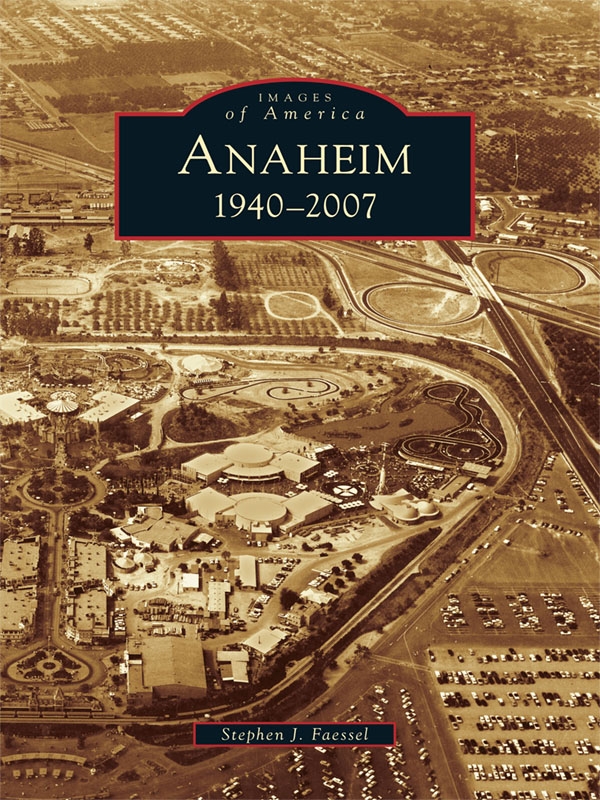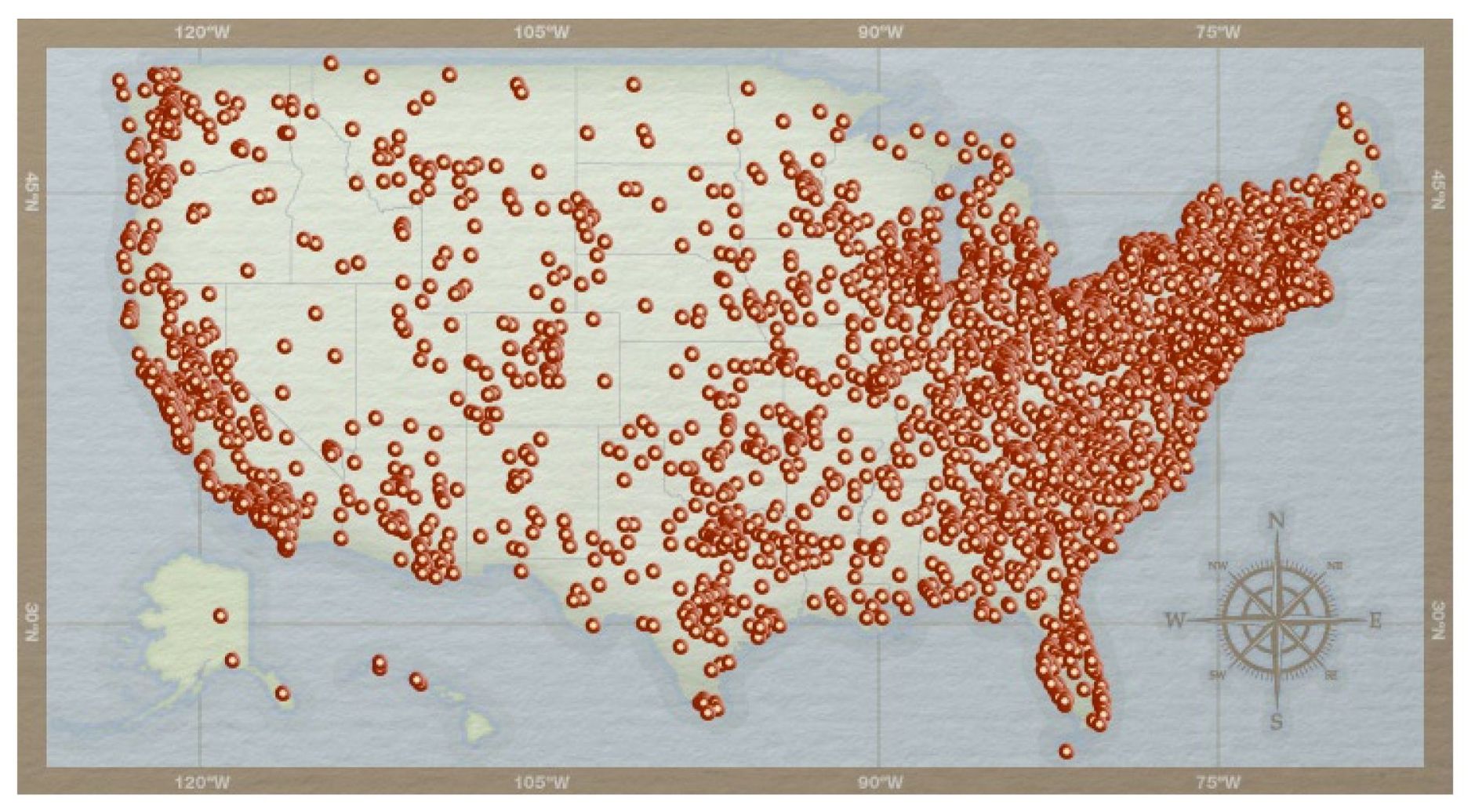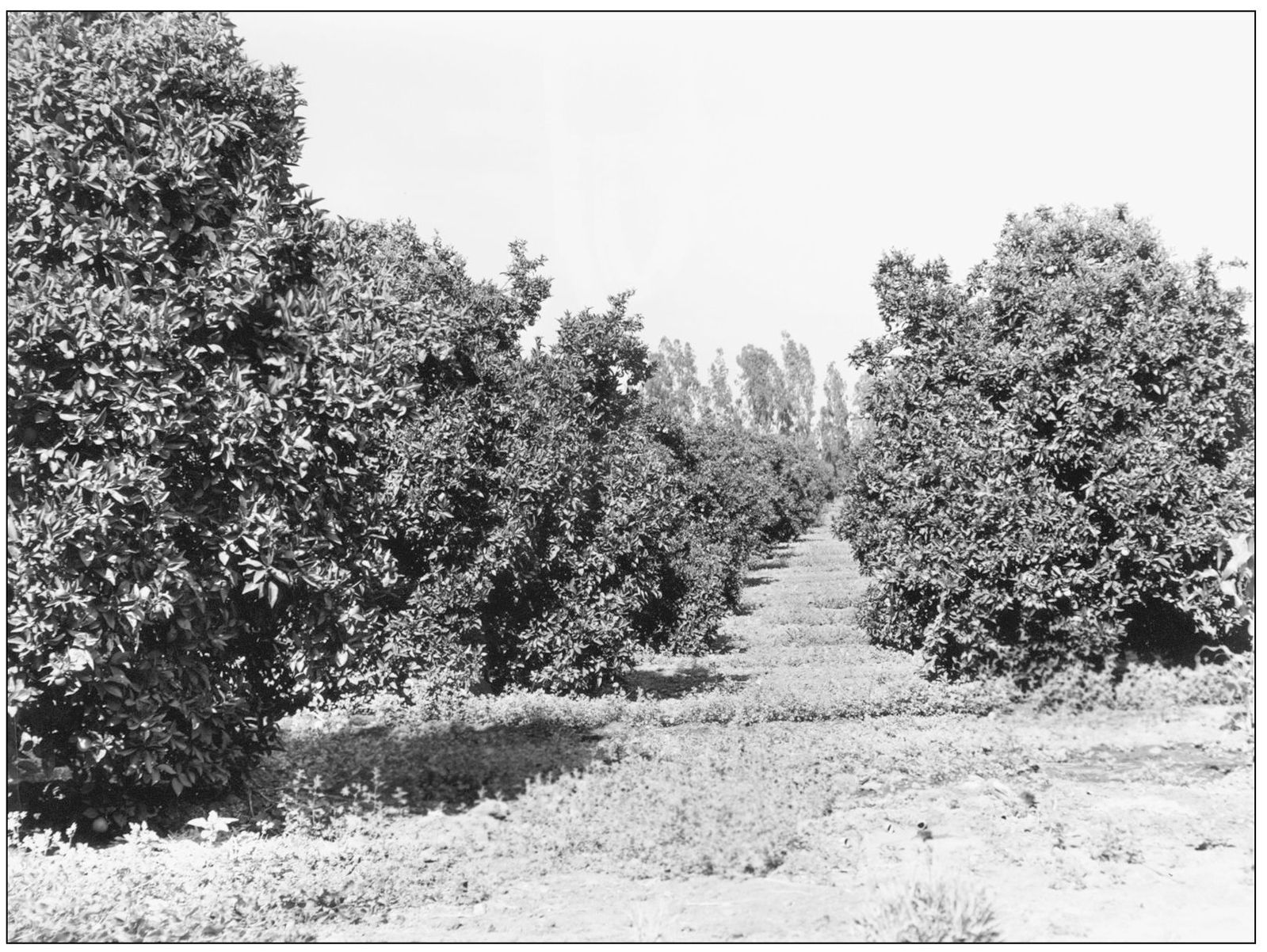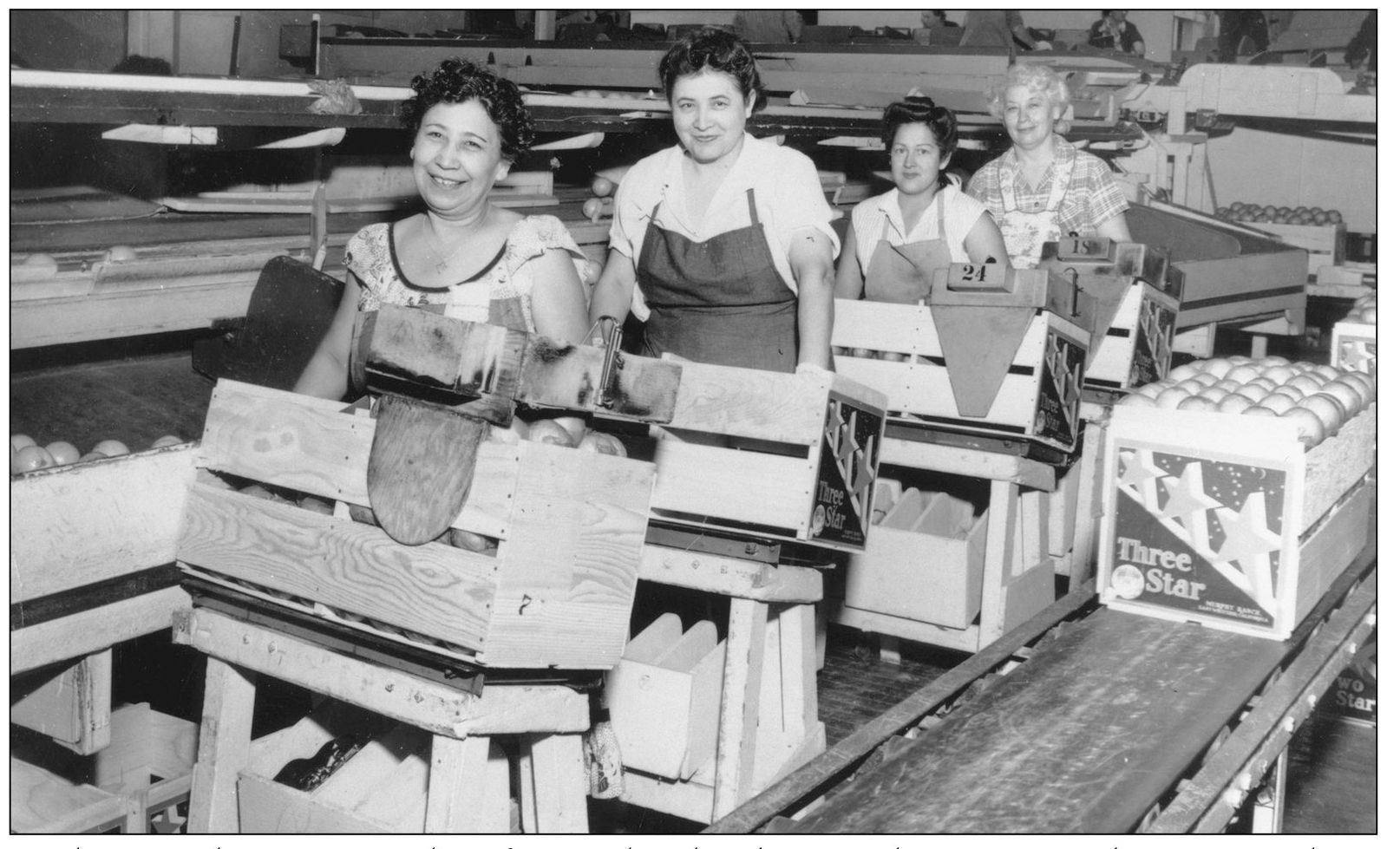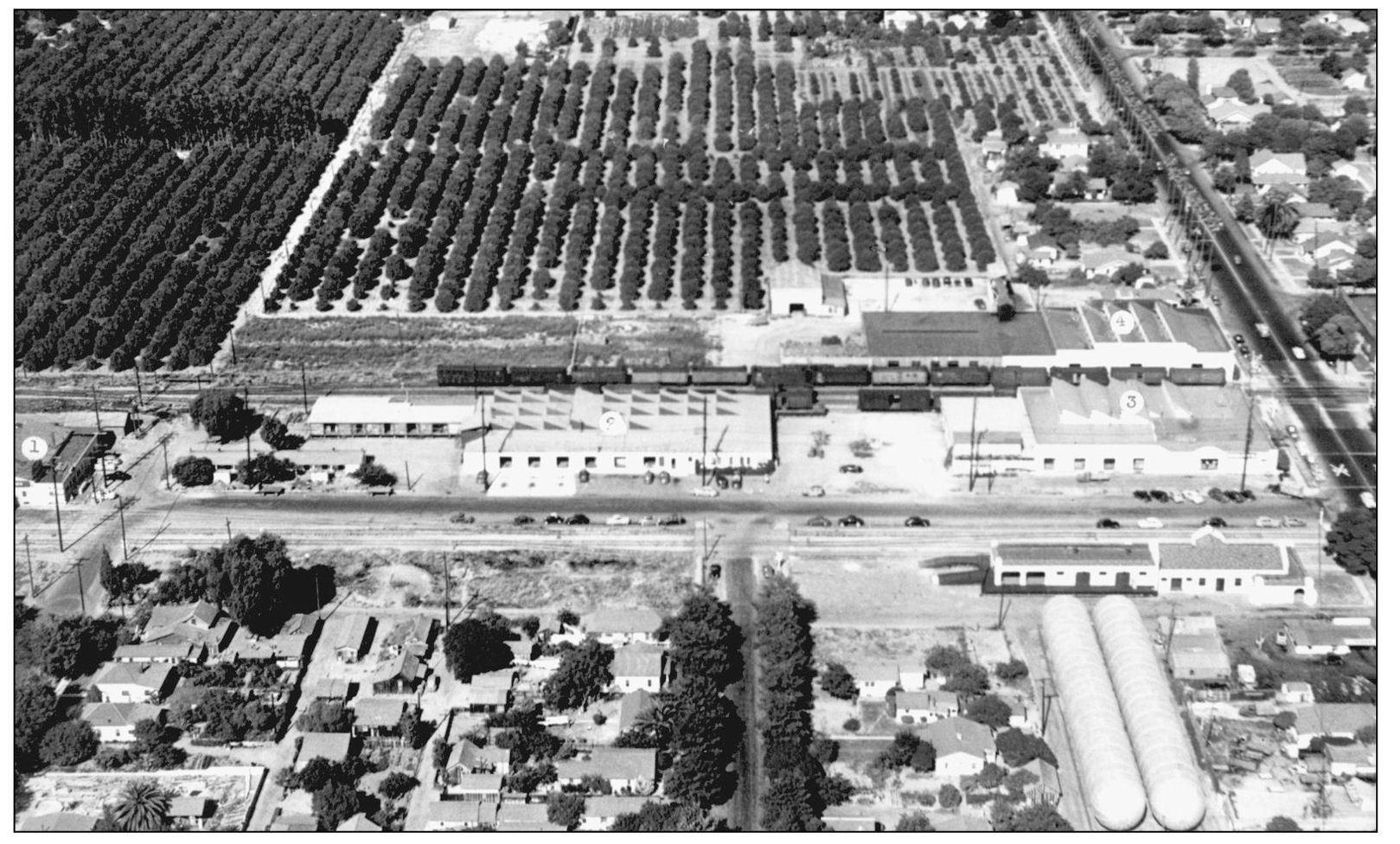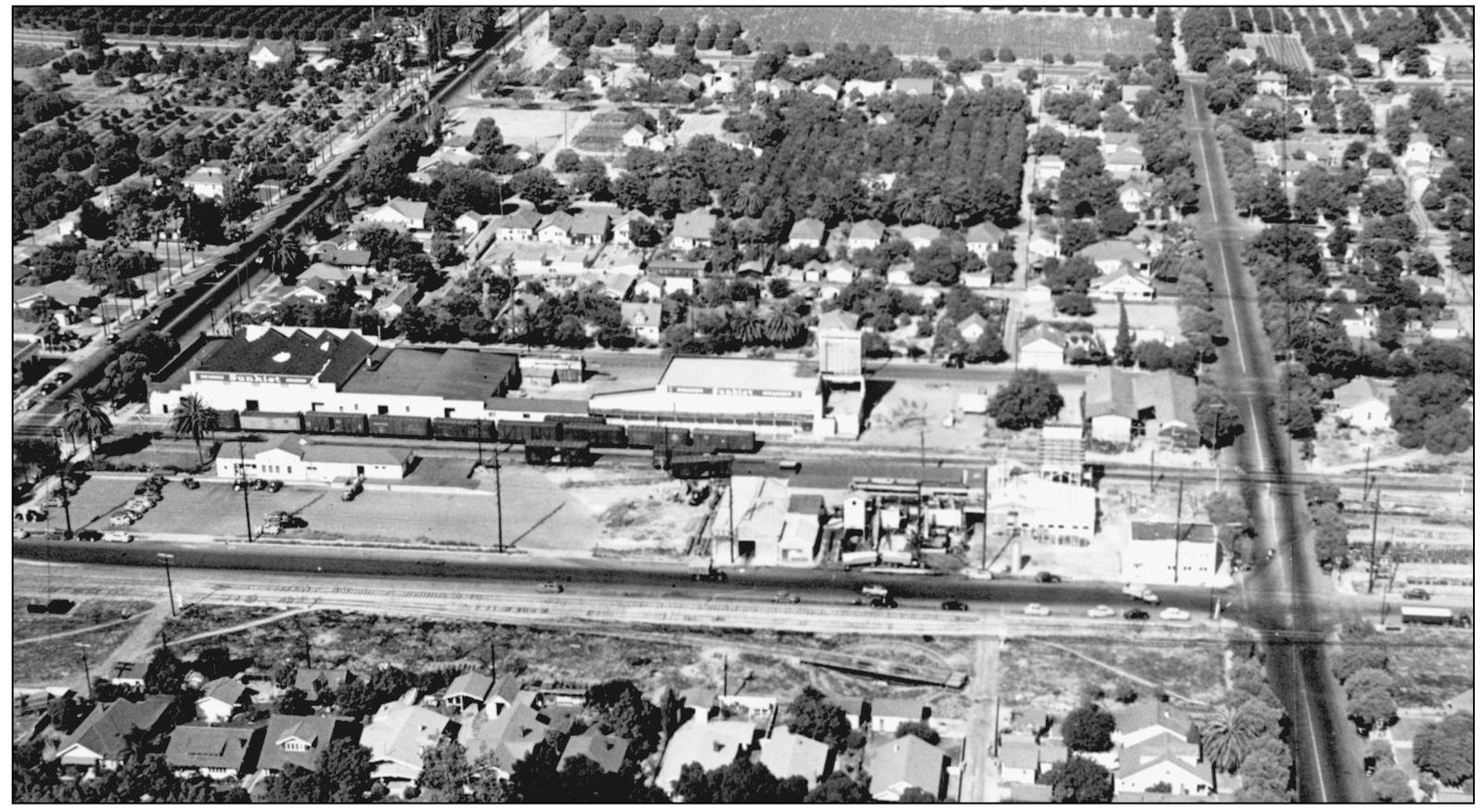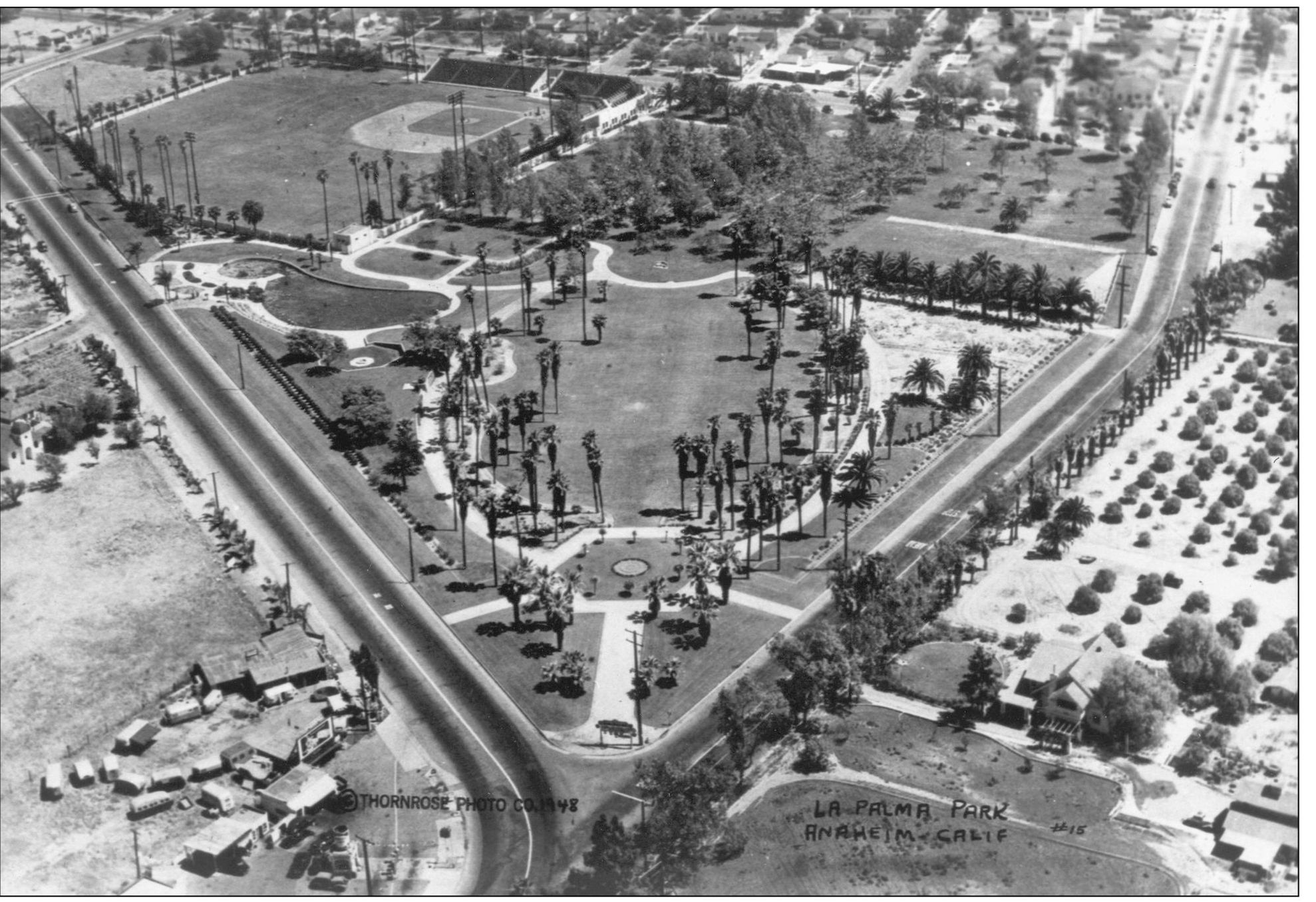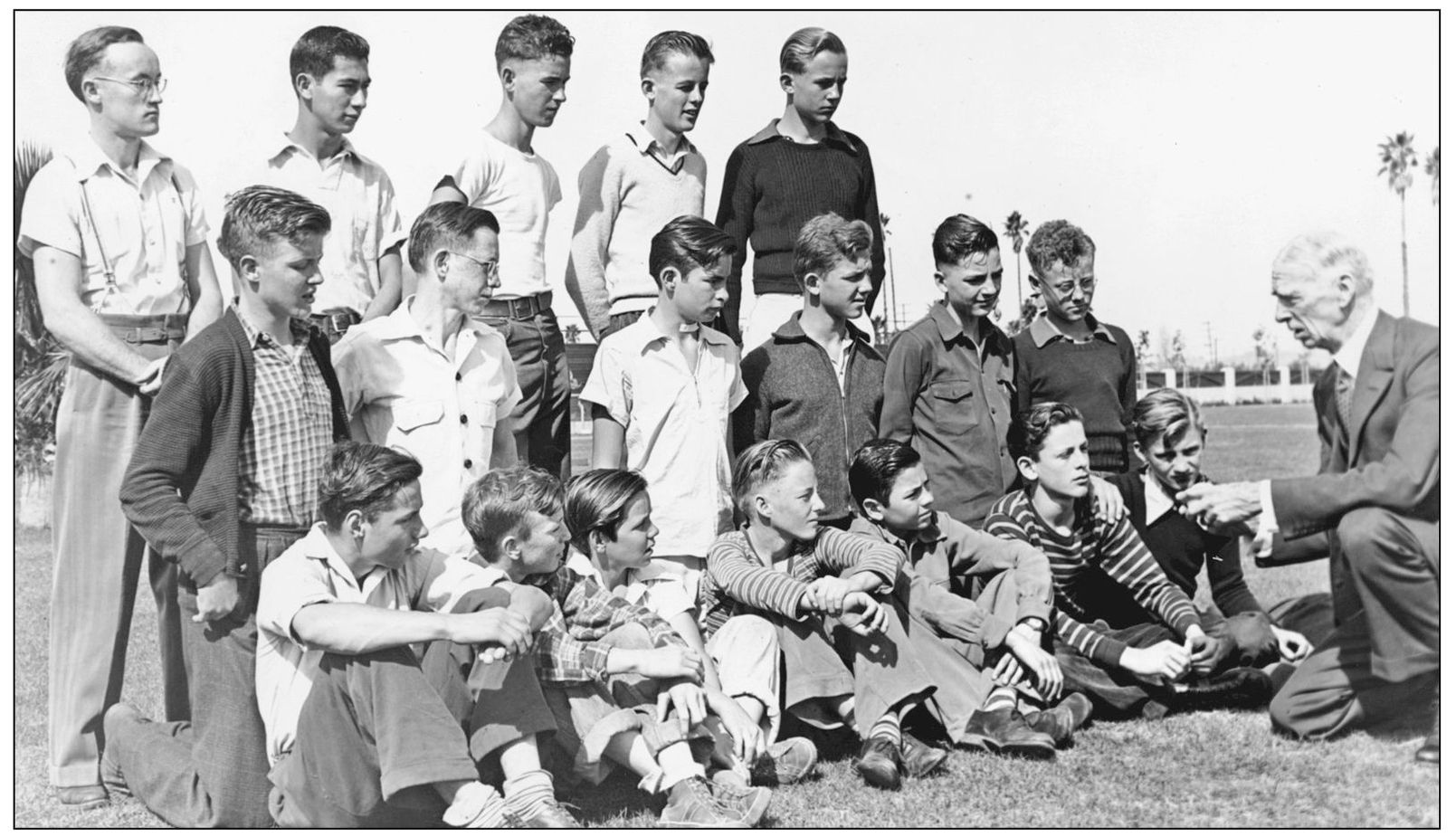ACKNOWLEDGMENTS
Again, my deepest appreciation goes to my supportive wife, Susan, for all of her effort in assisting in the selection of these photographs and captioning. I also cannot overlook my son Gregory, whose encouragement saw this work to its completion.
My most sincere thanks go to Jane Newell, local history curator of the Elizabeth Schultz History Room, Anaheim Public Library, for her more than generous assistance and support in the creation of this work. My thanks must also go to Ymelda Ventura and Sal Addotta, History Room staff members, who have been particularly helpful in providing the photograph and caption material required. Special thanks go to my close friend Opal Kissinger, who encouraged me to explore the history of a more modern Anaheim. Thank you, Dave, for your sportsmanship, Sheri for your plan, and Marcie for your enlightened guidance; for without you all, this might not have been completed.
Photograph credit goes to the Anaheim Public Librarys Digital Anaheim Project, which has made more than 2,000 vintage Anaheim images available to the residents, scholars, and historians throughout the world. Additional photograph credit must go to the City of Anaheim Community Development (Elisa Stipkovich, executive director); City of Anaheim External Affairs Office (John Nicolletti, manager); Steve Swain, Community Services superintendent; and Phil Brigandi, archivist at the Orange County Archives, who is a true historian in his own right and one that I greatly admire.
In writing the captions, the work of the late Dr. Leo J. Friis, Anaheims historian laureate, John Westcott ( Anaheim: City of Dreams ), Geoff Black, Bret Colson ( Dreams to Reality, a Profile of Modern Day Anaheim ), and this authors earlier work were relied upon. Not to be overlooked were the Norbert Faessel family that arrived in Anaheim in 1942 and the Ralph Warden family that located here in 1960, like so many others that were searching for a new beginning and found it in Anaheim. Through the efforts of the Anaheim Mother Colony Household, Inc. (Harold Bastrup, president emeritus), the Anaheim Historical Society, Inc. (Cynthia Ward, president), and the Anaheim Museum, Inc. (Joyce Franklin, exhibits director), Anaheims unique history will not be forgotten.
Find more books like this at
www.imagesofamerica.com
Search for your hometown history, your old
stomping grounds, and even your favorite sports team.
One
19401949 THE CAPITAL OF THE VALENCIA ORANGE EMPIRE
The late-ripening Valencia orange was well suited for Anaheims mild climate (often touted as the frostless belt) and well-drained soil. As the most successful replacement for the loss of Anaheims grape industry due to blight in the 1880s, which killed almost every vine in the region, citriculture gave Anaheim, as well as most of the region, a thriving economy. Every rancher would still listen for Floyd Youngs 8:00 p.m. Fruit Frost Report on KFI radio, as the local orange crop was more important than national news. By 1938, the peak of the Valencia orange in Orange County, 67,536 acres were planted with production of more than 9.3 million boxes of oranges, worth almost $17 million.
Anaheim was home to a number of regional packinghouses. The town was a dominant producer of the Valencia orange in the first half of the 20th century, packing over five million boxes by 1930. The interior of the Orange Belt Fruit Distributors, located at 805 East Center Street (now Lincoln Avenue), is seen in this c. 1940 view. Local women worked seasonally for the firms and handled the actual grading and packing of the fruit in this era. Pictured here are, from left to right, Marcella Gomez, Chonita Veyna, and two unidentified women packing Orange Belts Three Star brand of locally grown fruit.
The Anaheim Cooperative Orange Association was one of a number of packinghouses owned by the growers themselves, which allowed the citrus rancher the opportunity to have control of packing and marketing functions. The associations modern facility was located at 15301540 West Lincoln Avenue. In this 1943 view, Charles Reynolds prepares crates of the co-ops Autumn Leaf brand for shipment via rail.
Most of Anaheims orange packinghouses were built adjacent to one of the areas rail lines. On the west side of Anaheim, a number of facilities hugged the Santa Fe Railway mainline. Frank Belmonts modern Granada Packing House is located just left of center, with Borden Fruit Company, Orange Belt Fruit Distributors, and Webb Packing all facing East Center Street (now Lincoln Avenue) at far right. Anaheims 1923 Union Pacific Depot is seen at lower right as are Anaheims landmark twin 200-foot-long natural gas tanks on Topeka Street.
Looking east in this aerial view across Atchison Street between Center Street (now Lincoln Avenue) and Broadway shows the newly built 1941 Santa Fe Depot at upper left, the Borden Fruit Company and the Anaheim Citrus Fruit Association across the tracks, and the juice processor, E. A. Silzle, at the street corner, right of center in the photograph. Union Pacific Railroads turntable at the end of their Anaheim Branch line is seen at lower right. The many orange groves that supplied these firms can still be seen in the distance.
Anaheim leaders began discussing a second public park in 1935. An unkempt lot at the north entrance of town was acquired through a land swap for part of the citys orange grove on its old sewer farm on Loara Street. The new name of La Palma Park was chosen by a public lottery. After several years of delays, including the flood of March 3, 1938, which ruined most of the work accomplished to that date, the park was dedicated on Saturday, August 4, 1939. One of the first uses for the parks hardball diamond and concrete bleachers was as spring training grounds for a number of Pacific Coast AAA teams, including the Los Angeles Angels in the 1943, 1944, and 1945 seasons and the St. Louis Browns in 1946.
Professional baseball finally arrived in Anaheim when Connie Mack brought his Philadelphia Athletics to town in the spring of 1940. Mack, part owner of the team and a Hall of Fame member, was a very popular and accessible personality during the time his players practiced in the palm treeringed baseball diamond. His team would live at both the Pickwick and Angelina Hotels while in town and would stop by the Elks Club for meals. The Athletics would practice in Anaheim through the 1943 season, when wartime travel restrictions ended their annual visit. The St. Louis Browns would also practice in Anaheim during the 1946 season. Here Connie Mack discusses the finer points of the game to a group of local young fans.

